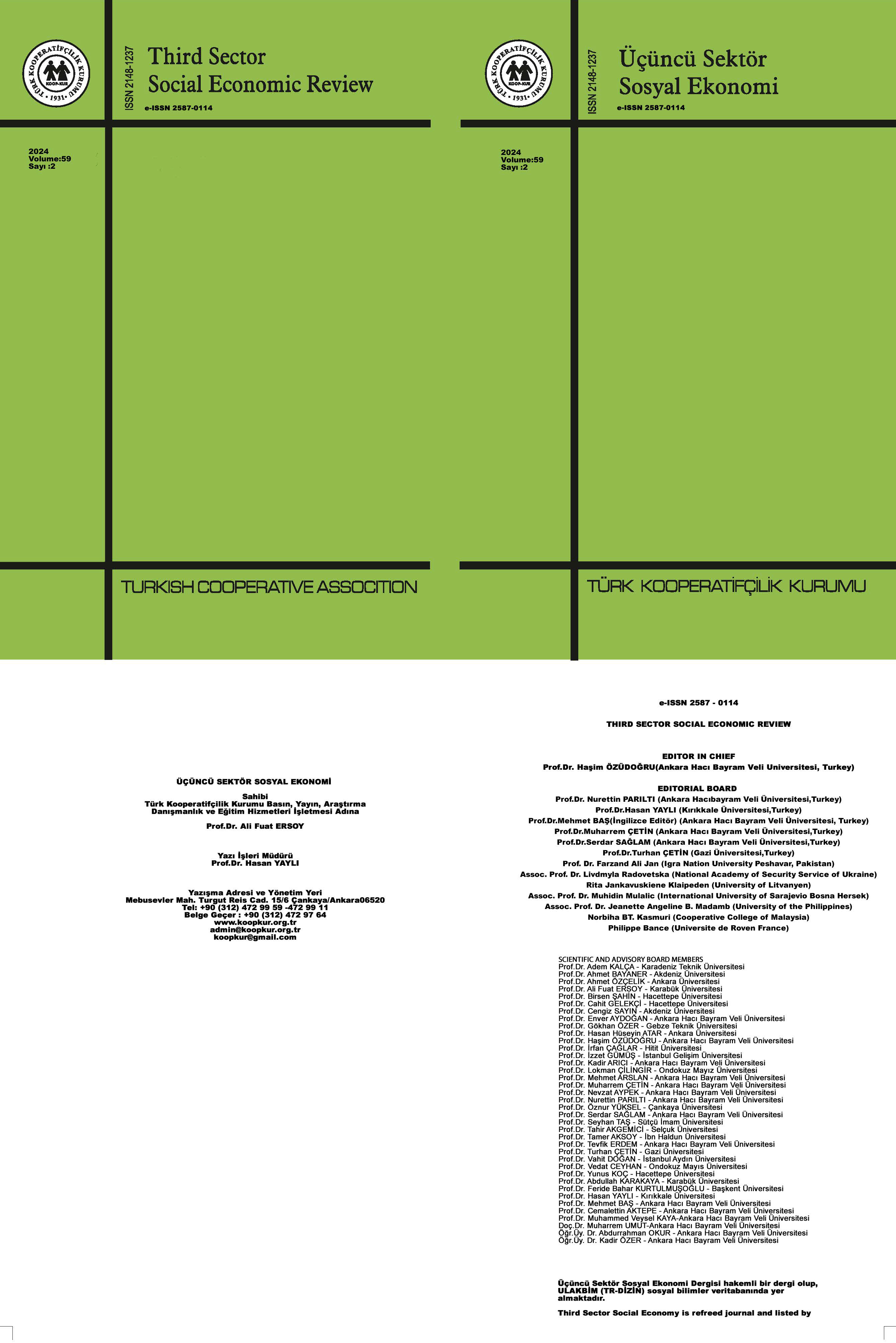THE EFFECT OF THE EXCHANGE RATE ON FOREIGN TRADE IN TURKEY
Keywords:
Exchange Rate, Import, Export, VAR Model, Cointegration Analysis, Error Correction Model, Causality Analysis, Variance DecompositionAbstract
The exchange rate represents the value of a country’s currency against the currencies of other countries. Especially in economies with a fluctuating structure, exchange rate movements are a crucial factor affecting the course of foreign trade. Therefore, understanding and effectively managing exchange rate movements are of critical importance. This study investigates the relationship between Turkey’s real effective exchange rate and the export and import volume indices using monthly data from 2013 to 2022. The E-Views software package was employed for data analysis. First, the stationarity of the variables was examined using the Augmented Dickey Fuller (ADF) unit root test, and then the long-term relationships between the variables were tested using the Johansen cointegration test. Afterward, the short-term effects of changes on the long-term equilibrium were analyzed using the error correction model. The Granger causality test was used to examine the causality between the variables, and finally, a variance decomposition analysis was performed. The analysis results show that there is a long-term relationship between the real effective exchange rate, exports, and imports, and the error correction mechanism is working, and the imbalance between short and long-term is reduced by approximately 30-35% in the next period. It was also found that there is a bidirectional causality relationship between exports and imports. According to the variance decomposition analysis, changes in the real effective exchange rate have a weak effect on exports and imports, but there is a strong relationship between exports and imports.









